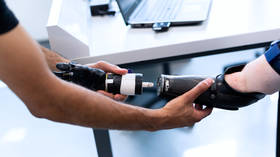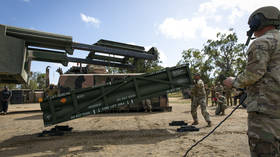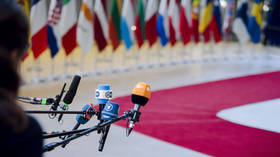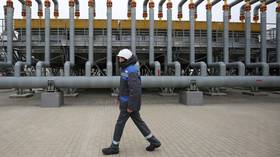Scientists restore ‘touch’ in amputees’ lost arms with spinal stimulators normally used to numb pain

Researchers in the US have helped four amputees to experience both touch and pressure via their prosthetic limbs, using spinal stimulators which are commonly used to dull pain, rather than to enhance sensation.
The team from the University of Pittsburgh's Rehab Neural Engineering Labs reengineered the spinal cord stimulators to provide sensory data to the brain from a prosthetic limb.
The stimulators are actually a series of implanted electrodes, described by researchers as “fat spaghetti noodles,” which run along the spinal cord, slightly offset to one side and above the same nerves that would normally transmit sensation from the now-missing arm.
Given that the team could make use of a large number of nerve endings at the cut-off point and along the spine, this treatment would apply to whole-arm amputations as well.
“What's unique about this work is that we're using devices that are already implanted in 50,000 people a year for pain – physicians in every major medical center across the country know how to do these surgical procedures – and we get similar results to highly specialized devices and procedures,” said study senior author Dr Lee Fisher.
Also on rt.com Mind’s eye: Incredible new brain implant lets the blind ‘see’ letters & shapesFisher's team tested the device by sending electrical pulses through different electrodes and asking participants to describe what they felt, and where, in order to map out exactly how the nerves are laid out along the spine and to which point on the patient's arm they corresponded.
The participants then marked the extent of the sensation by drawing the area of effect on a blank human form and, surprisingly, the areas of sensation were quite small and specific. This means that, with the right amount of research and development, future prosthetic limbs could be fine-tuned and calibrated to only respond when in contact with objects.
Furthermore, during the month-long experiment participants reported feeling both natural sensations like touch and pressure as well as more artificial sensations like tingling, buzzing or prickling. While this shows there is still plenty of work to be done on the signal-to-noise ratio of the device, it is indicative of a major development for amputees to regain lost quality of life.
The researchers will now begin work developing fully implantable spinal stimulators rather than externally-connected ones, as used in the trials. They also hope to improve the dexterity and control of prosthetic limbs when performing tasks like tying shoelaces or holding an egg without crushing it, by enhancing the sensory response of the stimulators in future iterations.
Think your friends would be interested? Share this story!














